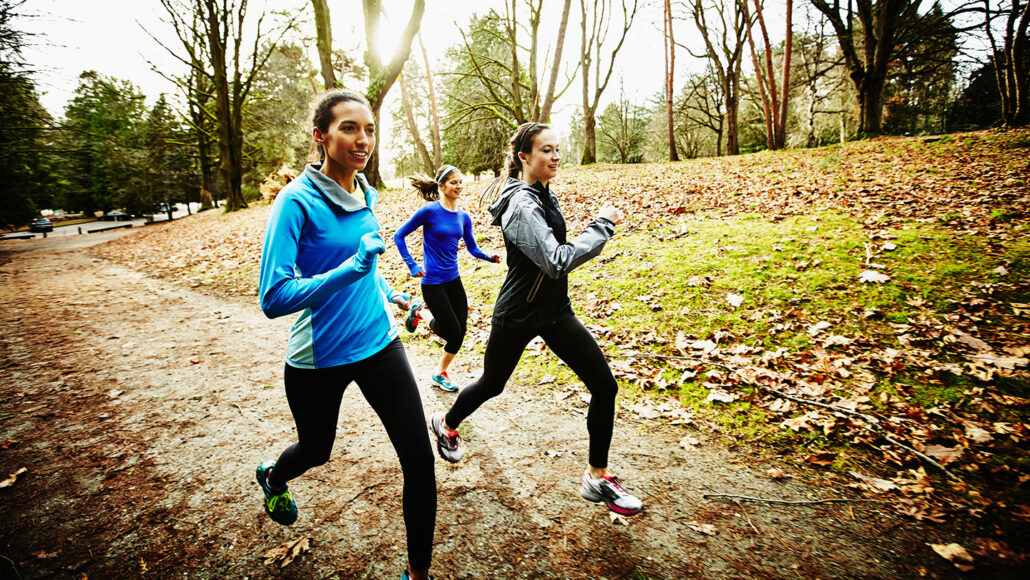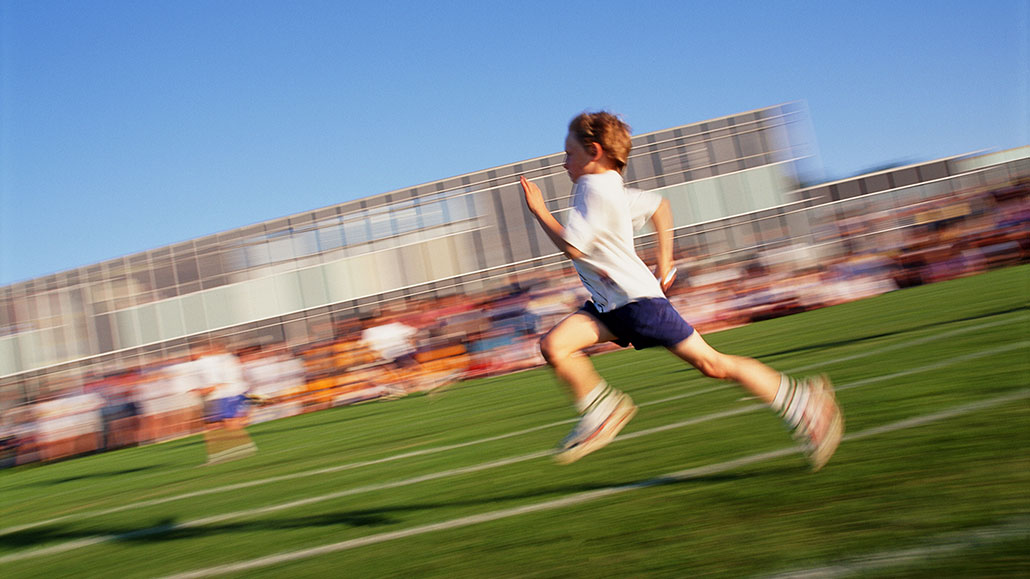Joggers run at an energy-efficient pace, new data show
Tests show speed tends to vary little, regardless of the distance run

Joggers don’t vary their speed much, regardless of how far they run. What’s more, new research shows, most people find what is for them an energy-efficient pace and stick with it.
Thomas Barwick/DigitalVision/Getty Images Plus
By Chris Gorski
Jogging can be a fun way to stay fit and burn calories. But most people settle into the same, comfortable pace whether on short runs or long ones. That speed usually keeps their energy use as low as possible.
“I was really surprised,” says Jessica Selinger. “I would have thought people run faster at shorter distances and slow their pace at longer distances,” she says. She works in Canada at Queen’s University in Kingston, Ontario. As a biomechanist (BY-oh-mek-an-ist), she studies how bodies move.
Selinger was part of a team that studied more than 4,600 adults. While exercising, each jogger wore a fitness device called the Lumo Run. The researchers combined its tracking info with data from lab experiments. Together, these data show that each person has their own most comfortable pace. It’s the one that uses the least energy. And it doesn’t change with the distance jogged.
“There is a speed that for you is going to feel the best,” Selinger says. “That speed is the one where you’re actually burning fewer calories.” Her team reported its findings April 28 in Current Biology.

Educators and Parents, Sign Up for The Cheat Sheet
Weekly updates to help you use Science News Explores in the learning environment
Thank you for signing up!
There was a problem signing you up.
Insights from real-world data
The researchers collected information from fitness trackers in men and women. Their ages and weights varied widely. Whether their jogs spanned only a narrow range of distances or varied greatly — their pace remained fairly constant.
Selinger says most research like this takes place in university labs. There, treadmill runs make it possible to learn how someone’s energy use varies with speed. Such studies tend to recruit people who are younger and healthier than the general public. By comparing data from treadmill runs to joggers wearing fitness trackers, the researchers could determine which speeds someone found most energy-efficient.
The wearable device used in this experiment allowed the researchers to track many more runs than they could in a lab. It also let the scientists include more real-life conditions. That made it possible to look at a “much broader cross-section of humanity,” Selinger says. They could also study a wider range of conditions — such as people who weren’t very fit, or maybe didn’t eat before running. Such data are messier than those gathered in tightly controlled lab tests.
The very large number of runs recorded by the wearable devices makes for a convincing general rule about how people run, says Rodger Kram. He’s a physiologist at the University of Colorado Boulder who didn’t work on the new study. “I think the rule’s right.”

Kram thinks it would be interesting to see how someone’s most comfortable pace may change with age. He’d also like to learn more about how kids pace themselves and burn calories.
“Kids will run really fast,” he says. “And then they’ll be like [gasping for air].” He now says he wishes “I’d worn a Lumo when I was eight years old.”
Ideal speeds differ — and have their limits
The results of the study don’t necessarily cover runs of more than several miles. That’s because people tire when they run very long spans. Also, the scientists did not study top athletes and other runners who were training for speed. Selinger says that a runner’s most comfortable pace can speed up as someone trains. It might also slow with age.
Want to burn more calories and go faster than your energy-efficient pace? Try running to upbeat music, Selinger says, or jogging with someone who’s faster than you.
The new results match what’s been seen in animals. Horses and wildebeests, for instance, also seem to run at their most efficient speed. Similarly, people tend to choose their most energy-efficient speed when walking.
It makes sense that people might have adapted to running without using too much energy, says study coauthor Scott Delp. He’s a biomechanist at Stanford University in California. Imagine being an early human who is about to go out on a hunt for a tasty but hard-to-find animal. “It might be days before I get my next food,” he says. “So I want to spend the least energy en route to getting that food.”







